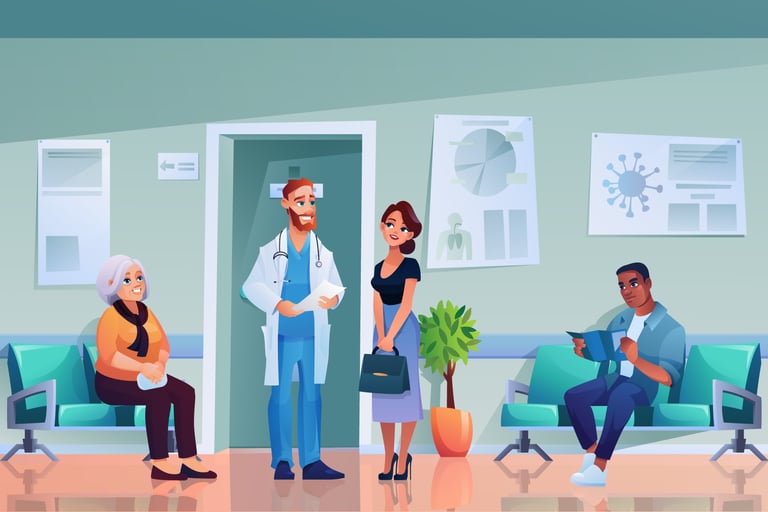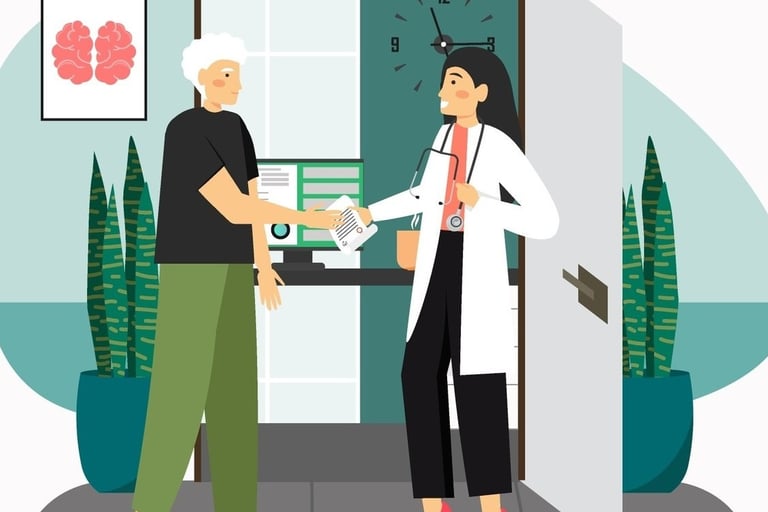

Arrival & Check-in
When you arrive at the office, checks in at the front desk, and provides your name, appointment details and insurance information.
It is important to provide family medical history, current medications taken, allergies, and most importantly, all paperwork at your appointment.
It is highly recommended that you arrive 10 to 15 minutes before your appointment slot with that information.
You will also be asked to sign forms regarding medical confidentiality as well as your agreement to be personally responsible for any costs that the insurance plan will not or will only partially reimburse. (Note, this is a good time to make sure your doctor is in-network that typically results in lower out-of-pocket costs for you).
Some offices may also have their registration forms online, which you can complete at home and bring with you to your first appointment. This would also cut down on waiting time.
After checking in, you might be asked to wait to be called before seeing a medical professional.


Seeing a Medical Professional
In some doctor’s offices you will be seen initially by a medical assistant who prepares you before seeing a doctor. As the first clinical contact, the medical assistant will be responsible for greeting you, taking your height, weight and blood pressure, and collect information about your presenting problem. taking your vital signs (like temperature and blood pressure), documenting your chief complaints and medical history, and escorting you to the exam room. They also perform tasks like collecting blood samples, performing basic tests, preparing the room, and communicating with the doctor to ensure a smooth and efficient visit.
Seeing the Doctor
Introduction
Before a doctor comes in, he/she will knock on the door of the room where you are waiting before coming in.
The doctor will make an introduction and verify your information before opening questions like "How can I help you today?" or “What brought you to here today?”
It is important to know that the doctors are busy and seeing many patients on the same day, so they allocate time for each patient encounter usually 15-20 minutes, so it is highly recommended you are prepared to describe your symptoms or conditions in a concise manner with prioritization.
Clinical Assessment
After introduction, the doctor asks more questions based on your description of symptoms and conditions and evaluates the patient's health status and may perform tests.
For example, here are a few questions that the doctor may ask around pain symptom:
"Is it sharp, dull, burning, cramping, or pressure-like?”
“Is it constant, or does it come and go?”
“ On a scale of 1 to 10, with 10 being the worst pain of your life, how would you rate your pain?"
Depending on the situation, the doctor may also ask standard questions outside your main complaints such as questions on your mental health etc. You need to be prepared to answer them as well. If you are not sure about how to answer them, it is the best to clarify through the doctor or someone else you trust (family, friends, translator etc.) before answering.
Diagnosis and Treatment
Based on the evaluation, the doctor completes the diagnosis and may prescribe medication or request for additional tests and/or follow-ups.
At the end, the doctor documents the entire encounter, including your symptoms, the findings, diagnosis, and the treatment plan, in the medical chart.
The doctor may advise you for a follow-up after a certain period given the condition.


Before Leaving
Before leaving the front desk, complete these important tasks:
Obtain an After-Visit Summary (AVS). This is a written document that details everything from your appointment, including your diagnosis, medications, follow-up appointments, and any next steps.
Clarify follow-up instructions. If your doctor recommended a follow-up appointment, a specific test, or a referral to a specialist, confirm the details with the front desk staff and make the appointment before you leave if possible.
Get new prescriptions. Ensure all new prescriptions have been sent to your pharmacy. If your medication has changed, double-check if you should stop taking your old one.
Understand your care plan. Take a moment to review your notes or the AVS and ask for clarification on any medication changes, dietary restrictions, or activity limitations you may have.
Address billing. Find out if you have a copay or other fee to pay at the time of your visit and confirm that your insurance information is correct.
The above provides a starting point of navigating the US healthcare system effectively. Your actual experience may vary on a case-by-case basis. But it is important to know your health relies on active engagement and clear communication with your providers to ensure the best care.
